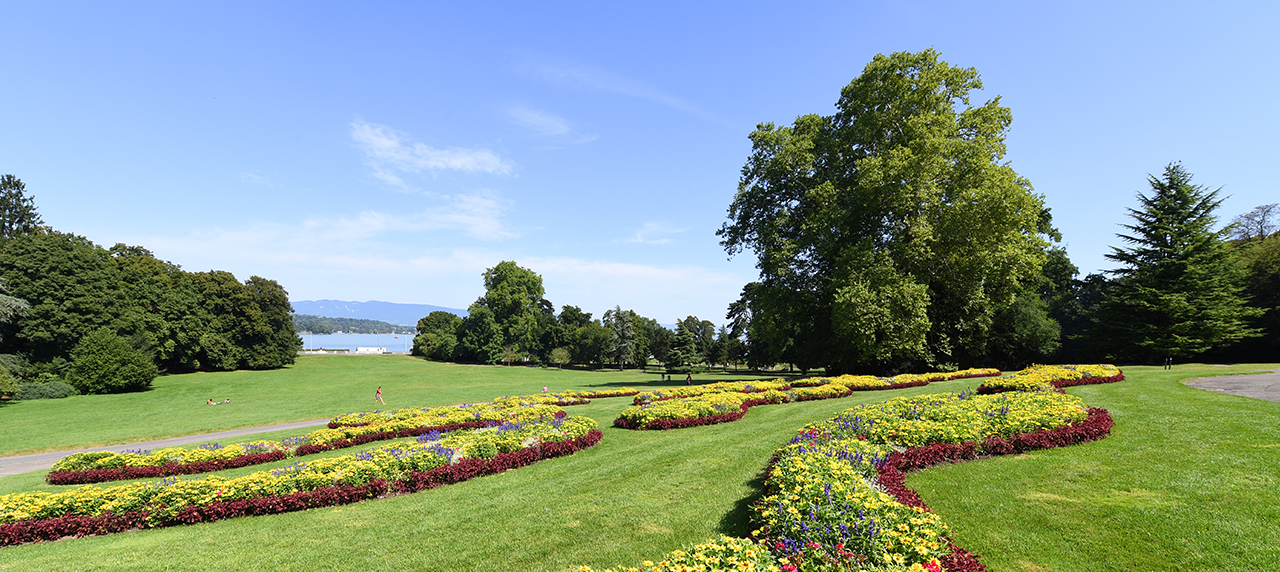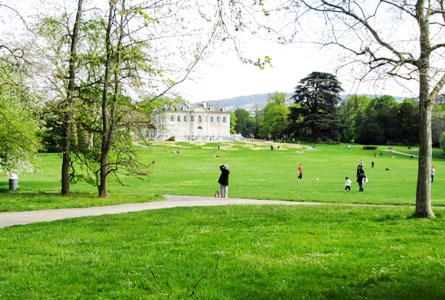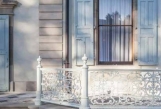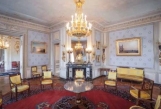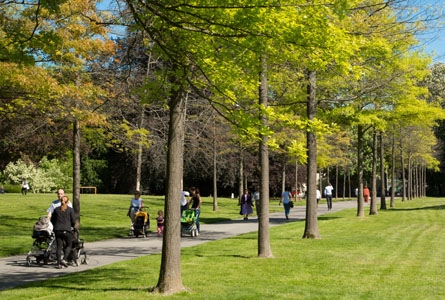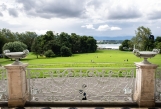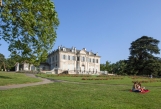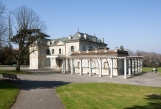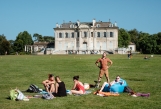Parc La Grange is one of the largest and most attractive parks in the city. Its magnificent trees, spectacular viewpoints and diverse ambiances make it a favourite place for enjoying a walk. It is located between the district of les Eaux-Vives and Parc des Eaux-Vives, with which it forms one continuous green area.
Associated articles
Opening times:
November to March: 7 a.m. to 6 p.m.;
April to May: 7 a.m. to 9 p.m.;
June to August: 6 a.m. to 10 p.m.;
September to October: 7 a.m. to 9 p.m.
History of the parc and Villa La Grange
Parc La Grange is classified as a historical monument.
The site bears traces of a human presence dating back to Neolithic period. Two menhirs lying on their side can be seen in the upper reaches of the park, not far from the ruins of the villa of the Roman official Titus Fronto (whose name gave rise to that of Frontenex).
In the 18th century, the agricultural area was given the name of La Grange. The owners, the Lullin family, built the manor house between 1768 and 1773 and laid out a French garden. The house design is attributed to the architect Jean-Louis Bovet, by analogy with the architectural style of the Château de Crans. Located on the edge of the city, the villa was used mainly as a summer residence and to receive distinguished guests.
The ownership passed from the Lullin to the Favre family who transformed the house and park, bybsetting its peculiar curved paths as well as the pond and the rock garden. They also built the monumental entrance with its lions along the Quai Gustave-Ador, the pergola, the orangery and, in 1821, the superb library, which still shelters Guillaume Favre’s prestigious book collection today, with around 15,000 works.
The estate was bequeathed in 1917 to the City of Geneva by William Favre. One year later, he bequeathed by will to the City of Geneva the library of La Grange, which has since been managed by the Bibliothèque de Genève. This cultural institution organizes an annual series of visits that allow the public to access this beautiful house and its precious books. In 1864, the stunning estate hosted the closing gala of the Geneva convention presided over by Henry Dunant.
Standing alone in the middle of the park, the iconic Villa de La Grange is partly sheltered on its southern side by stately trees. On this side too are the outbuildings, preserved in their original layout: house, barn, stables, shed and a beautiful double basin fountain. The northern side of the villa, on the other hand, has a terrace with a perfectly clear view of the park and the lake, and an exceptionally elegant facade.
At the bottom of the park, bathed in sunlight and sheltered from the wind, the grand rose garden was planted in 1945, giving rise to the Geneva International New Rose Competition. A haven of greenery, Parc La Grange welcomed Pope Paul VI in 1969 to celebrate a mass attended by some 70,000 people. At that time, when it was prohibited to walk on the lawns, those of La Grange were the only place in Geneva large enough to host this throng of people.
- For more information about the parc and Villa La Grange, view the pdf "La Grange - cultural heritage of the City of Geneva", french/english edition
An exceptional wealth of plants
The sloping land is scattered with remarkable trees, and in particular a collection of cedar trees which are over 200 years old, impressive plane trees, a group of hundred-year-old oaks in a grazed meadow and a magnificent beech wood at the top of the park.
A little lower are the enchanting alpine lake and a rock garden strewn with alpine plants and a collection of brightly-flowering rhododendrons. Stunning floral arrangements can be admired around the manor house which dominates the park.
Amenities
Public toilets.
A vast open area for dogs runs along route de Frontenex and to the top of Rue William Favre. In the rest of the park, dogs are allowed on the paths if kept on a leash.
Ecological management
The City’s parks and gardens are managed ecologically without any chemical products being used. In Parc La Grange, biodiversity is encouraged by means of breeding sites for wood-boring insects and bee hives as well as indigenous shrubs and meadows where sheep would graze during the summer.
Liens externes
Accessibility of the site
Partiellement accessible en fauteuil roulant
Toilettes partiellement accessibles en fauteuil roulant
Place de parc accessible en fauteuil roulant
Article modifié le 28.03.2024 à 09:07

